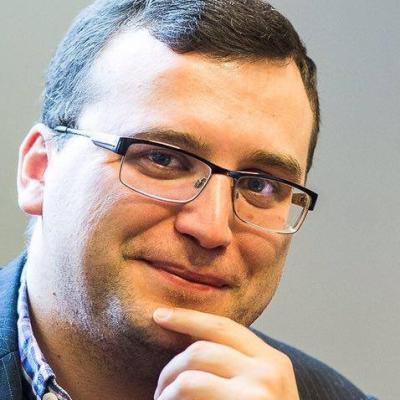Yuri Borisov, the newly appointed Director General of the Roscosmos State Space Corporation and former deputy prime minister overseeing the military industry, informed Vladimir Putin on 26 July 2022 that Russia had decided to withdraw from the International Space Station (ISS) after 2024 and to focus on its own Russian Orbital Service Station (ROSS). At the same time, he stressed that all Russian commitments to ISS partners (the US, EU, Japan and Canada) would be fulfilled.
The phrase ‘after 2024′ was initially interpreted as ‘in 2025′, especially since Borisov himself first mentioned the imminent withdrawal from the ISS and the final decision about Russia’s own orbital outpost in April 2021, which was covered by a separate article in Riddle. In addition, the previous Director General of Roscosmos, Dmitry Rogozin, created suspense in April 2022 when he said that the decision to extend Russian involvement in the ISS after 2024 would depend on ‘the situation both in our country and beyond’. All of this became weird, especially after Russian representatives informed NASA that ‘after 2024′ actually meant ‘not earlier than 2028′, or rather, not before Russia starts deploying its own orbital station.
Let us go over the novelties in Russia’s space plans which have appeared over the past year, especially since Rogozin was replaced by Borisov as head of Roscosmos amidst the ongoing war against Ukraine and the almost complete severance of ties between Russia and the West in all areas except the ISS.
Is it about bargaining or Russia’s own orbital outpost?
The main thesis of the previous article was that Moscow’s rhetoric about leaving the ISS was part of its bargaining strategy with the West. The main goal of this strategy is to continue cooperation with the West in the area of crewed space missions on terms that would allow Russia to maintain its high international status and preserve its space industry despite severe sanctions.
I argued in that article that the construction and deployment of its own orbital station would overstretch Russia’s capabilities, if these plans are within Moscow’s reach at all. It was emphasised that ‘a Russian space station (…) might become a working plan if agreement with the current US administration is not reached and/or if the divergence between Russia’s approach to space affairs and other actions reaches a critical limit’. However, the latter would mean the worst-case scenario.
We can see that Russia’s space policy has definitively diverged from other areas of its foreign and domestic policy. Cooperation with the US, Europe, Japan and Canada beyond the ISS is out of the question. Thus, under the current circumstances, the only, albeit extremely risky, option for Russia is to attempt to build its own orbital station. Two possibilities were initially considered. One is a station based on new modules for the Russian segment of the ISS on the same orbit, which is laid down in the 2016−2025 Federal Space Programme (FKP-2025). Another possibility envisages a high-latitude orbital station based on the Science Power Module (NEM), which was planned for the ISS but is unlikely to make it there due to years of delays. And the scale tips in favour of the second option so far.
In addition to Borisov’s statement, a detailed interview with Vladimir Solovyov was published on the same day, i.e. 26 July 2022. Solovyov is the chief designer of the Korolev Rocket and Space Corporation Energia (RSC Energia), the key company within the Roscosmos family, which is in charge of the manned programme. And one of the most interesting statements made by Solovyov is as follows: ‘I very much hope that by the end of this year we will be able to convince the government that it is necessary to build the high-latitude station. If the decision is made and funds are earmarked, we will develop the conceptual design by the end of 2022 (…).’ To put it differently, talks about the new station have been under way since April 2021, and Vladimir Putin has been informed about the intention to leave the ISS after 2024, but the most important decision has not yet been taken, and the financing of the project has not yet started.
At the same time, the replacement of Rogozin with Borisov as head of Roscosmos clearly shows that the authorities are aware of the imminent crisis in the Russian space industry against the backdrop of the war. After all, the main tasks for Rogozin, who is personally loyal to Putin and has no connections in the industry, included control of financial flows and conservative optimisation of the state-owned corporation without drastic changes. As early as 2021, however, the situation at Roscosmos began to deteriorate due to the impact of sanctions and the termination of contracts with the USA for transporting astronauts to the ISS and delivering RD-180 rocket engines.
Today, it is no longer a question of Russia’s ability to take a step forward in its crewed space programme, but also of keeping the GLONASS satellite navigation system operational until the end of the 2020s and maintaining an already very modest programme of fundamental space research. Against this backdrop, Borisov appears to be the ‘saviour’ of Russia’s space industry, summoned by the Kremlin. Borisov is a competent person who is respected in the space industry, and he has clout in the highest echelons of power in Russia and at least an acceptable reputation abroad (unlike Rogozin). This saviour is entrusted with the right to take even painful decisions.
And it is all the more strange that the new head of Roscosmos made his statement about withdrawing from the ISS after 2024 without having a government decision in hand — that is, he simply made a non-binding verbal intervention. It is possible, of course, that the meeting with Putin was meant to put pressure on the government. Still, one gets the impression that Mishustin’s government along with Borisov, who has just left it, and the whole of Roscosmos are just stalling for time, staging a political show about a new orbital station to entertain the Kremlin.
What is wrong with the plans to deploy a Russian orbital outpost?
A rather bold assumption about the mock plans to construct and deploy the ROSS is based on the fact that the new head of Roscosmos and at least some of the Russian government have an understanding of the critical problems associated with the severed ties between Russia and the West. This assumption is corroborated by the aforementioned interview with the chief designer, Solovyov.
To begin with, the yet-to-be-built NEM, which will be incorporated into the new station, has to be redesigned, as there will be no access to the Western electronics that the designers initially had in mind. Also, control moment gyroscopes (CMGs, altitude control devices used in spacecraft altitude control systems) and a toilet have to be installed. Moreover, the manned Oryol spacecraft under construction has to be redesigned, as it was originally planned for lunar research expeditions, not for servicing an orbital station. As for the spacecraft itself, the chief designer of RSC Energia does not expect Oryol to appear before the 2030s, although the unrealistic but official plan until recently was to have the first crewed flight in 2025. Before Oryol is taken onboard, Russia will have to operate Soyuz and Progress spacecraft even on the new station.
Second, the following statements are noteworthy: ‘We certainly need to continue to operate the ISS until the ROSS reaches considerable capacity (…) In addition, we must bear in mind that if we discontinue manned flights for several years, it will be very difficult to restore what we have achieved afterwards.’ It is noteworthy that the first NEM is not expected to be sent into orbit before 2028, while subsequent modules will be sent into orbit no earlier than 2030. And this is not to mention the fact that, after the module is redesigned and Western electronics are replaced by non-Western equivalents, the NEM might exceed the payload capacity of an Angara A5 launch vehicle. That is, in the best-case scenario, the station will be operational in the mid-2030s. Thus, at least serious people in the Roscosmos leadership are in favour of staying on the ISS as long as possible.
Third, the envisaged mode of operating the high-latitude ROSS orbital station looks rather peculiar. This will not be a permanently manned station. Instead, it will be visited twice a year for a period of one to two months. Cosmonauts will only be needed to replace and adjust equipment. In addition to scientific activities, the ROSS would be used to carry out observations of Russia from space for economic purposes and of other states for military purposes. Therefore, it is planned that such a station will, in fact, replace remote-sensing satellites which operate in different frequency bands, as Russia is facing huge and probably almost insurmountable difficulties with constructing satellites under the embargo on electronic components and industrial equipment. Ideally, the station will be able to accommodate heavier, larger and more energy-intensive surveillance equipment that Russia hypothetically will still be able to produce.
Furthermore, Solovyov confirmed that Russia would not be able to build a rocket for a crewed lunar programme and that if such a programme appeared at all, it would go beyond the current planning and forecasting framework.
Consequently, it is obvious that the Russian orbital station project is both very ambitious and largely unfeasible given the current circumstances. Should the final decision to pull out from the ISS programme be made, the Russian space programme, as it has developed since 1992 and with the Soviet space programme inherited from the previous system, will simply cease to exist when the ISS is de-orbited. Being aware of the situation, the Russian authorities are trying to postpone the final decision.
Of course, if the NEM could be built faster, if the rocket to launch it were ready, and if the module were within the rocket’s payload capacity, it could be docked on the ISS. That is, it would be possible to return to the original plan laid down in the FKP-2025. The plan envisaged the construction of the Russian station from the Nauka, Prichal and NEM modules. By the way, the American Axiom Space company has precisely such a plan. Its modules are under construction, and the company plans to dock them on the ISS. Before the ISS is de-orbited, the modules will be detached and operated independently as a commercial orbital station. But in Russia’s case, for such a plan to work would require a miracle.
However, Roscosmos and the Russian government may just as well hope for another miracle to happen. They will stall for time fantasising about the new station until the most important viewer of their performance leaves the theatre forever. Then they might start restoring relations with the surrounding world, as long as something is left of Russia’s space programme and the country’s status as a major space power.










